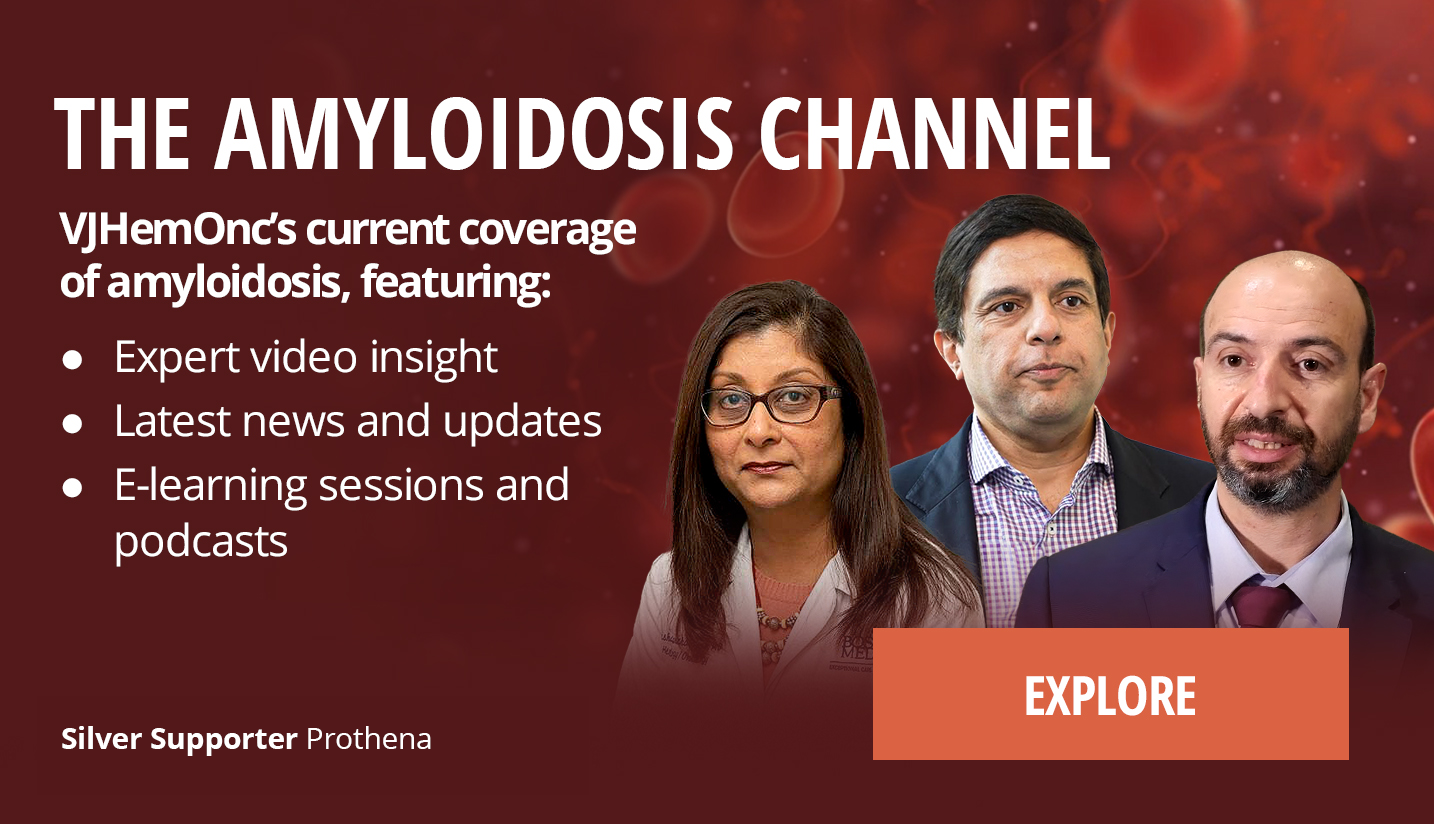So venetoclax has shown encouraging clinical efficacy in plasma cell disorders, including multiple myeloma and light-chain amyloidosis, especially in patients harboring the translocation between chromosomes 11 and 14. So in collaboration with Columbia University, we performed a retrospective analysis to evaluate the outcomes of venetoclax-based therapy in patients with relapsed/refractory light-chain amyloidosis who had previously failed daratumumab-based treatment and who were positive for the translocation 11,14...
So venetoclax has shown encouraging clinical efficacy in plasma cell disorders, including multiple myeloma and light-chain amyloidosis, especially in patients harboring the translocation between chromosomes 11 and 14. So in collaboration with Columbia University, we performed a retrospective analysis to evaluate the outcomes of venetoclax-based therapy in patients with relapsed/refractory light-chain amyloidosis who had previously failed daratumumab-based treatment and who were positive for the translocation 11,14. So this is important because right now there are no FDA-approved treatments for relapsed/refractory light-chain amyloidosis. So in our study, venetoclax was given in combination with other established plasma cell-directed agents. Venetoclax-based therapy led to an impressive efficacy with deep and rapid hematologic responses. So in detail, hematologic overall response rate was 97%, with most of these patients up to 91% achieving deep responses, which means very good partial response or better after exposure to only two cycles of therapy, so pretty quickly. So in terms of organ response, 74% of patients with evaluable cardiac involvement achieved organ response to venetoclax, and almost half of the patients with renal involvement achieved organ response. So venetoclax appeared to have a favorable safety profile. We did not see any unexpected adverse events or any excessive toxicities, and it was fortunate to see that no deaths were directly attributed to venetoclax. So I would say overall these findings are important in the context of the recent addition of daratumumab in the frontline setting for light chain amyloidosis, which leads to a growing number of daratumumab refractory patients early in the disease trajectory and lack of FDA approved drugs for relapsed/refractory light chain amyloidosis.
This transcript is AI-generated. While we strive for accuracy, please verify this copy with the video.














